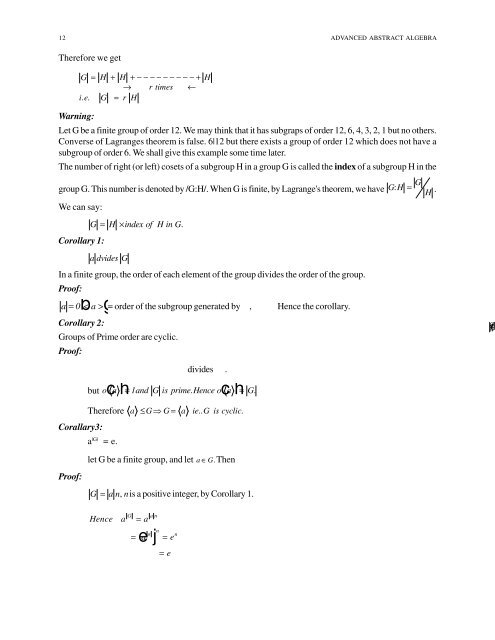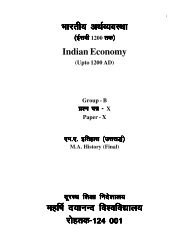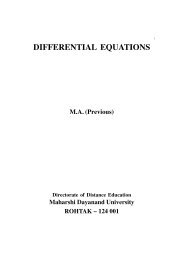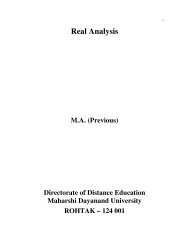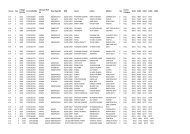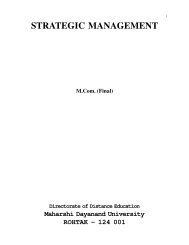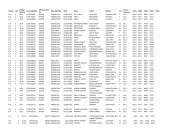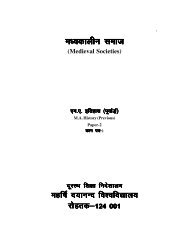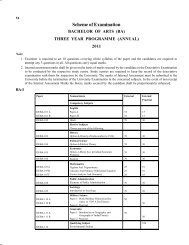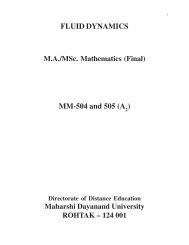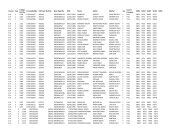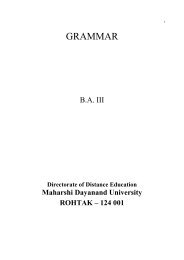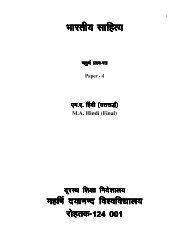Advanced Abstract Algebra - Maharshi Dayanand University, Rohtak
Advanced Abstract Algebra - Maharshi Dayanand University, Rohtak
Advanced Abstract Algebra - Maharshi Dayanand University, Rohtak
You also want an ePaper? Increase the reach of your titles
YUMPU automatically turns print PDFs into web optimized ePapers that Google loves.
12<br />
ADVANCED ABSTRACT ALGEBRA<br />
Therefore we get<br />
Warning:<br />
G = H + H + − − − − − − − − − + H<br />
→ r times ←<br />
i. e.<br />
G = r H<br />
Let G be a finite group of order 12. We may think that it has subgraps of order 12, 6, 4, 3, 2, 1 but no others.<br />
Converse of Lagranges theorem is false. 6|12 but there exists a group of order 12 which does not have a<br />
subgroup of order 6. We shall give this example some time later.<br />
The number of right (or left) cosets of a subgroup H in a group G is called the index of a subgroup H in the<br />
group G. This number is denoted by /G:H/. When G is finite, by Lagrange's theorem, we have G: H = G H .<br />
We can say:<br />
Corollary 1:<br />
G = H × index of H in G.<br />
a dvides G<br />
In a finite group, the order of each element of the group divides the order of the group.<br />
Proof:<br />
a = 0b< a > g= order of the subgroup generated by<br />
Corollary 2:<br />
Groups of Prime order are cyclic.<br />
Proof:<br />
,<br />
Hence the corollary.<br />
a<br />
Le G<br />
Corallary3:<br />
c h<br />
divides<br />
but o a ≠ 1 and G is prime. Hence o a = G.<br />
.<br />
c h<br />
Therefore a ≤G G = a ie.. G is cyclic.<br />
a |G| = e.<br />
Proof:<br />
let G be a finite group, and let a<br />
G<br />
∈ G<br />
.Then<br />
= a n, nis a positive integer, by Corollary 1.<br />
G<br />
Hence a = a<br />
a n<br />
n<br />
a<br />
e j<br />
= a = e<br />
= e<br />
n


